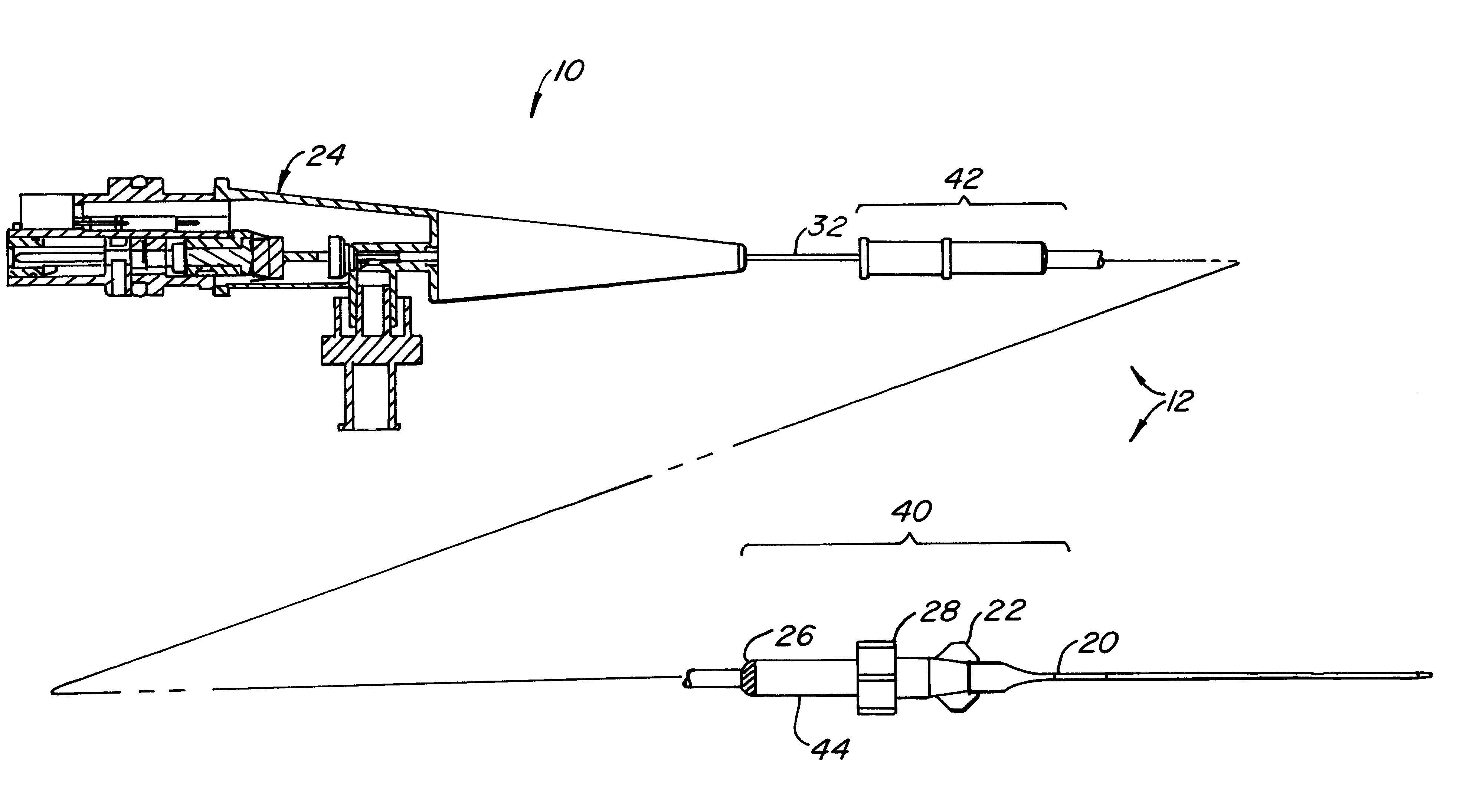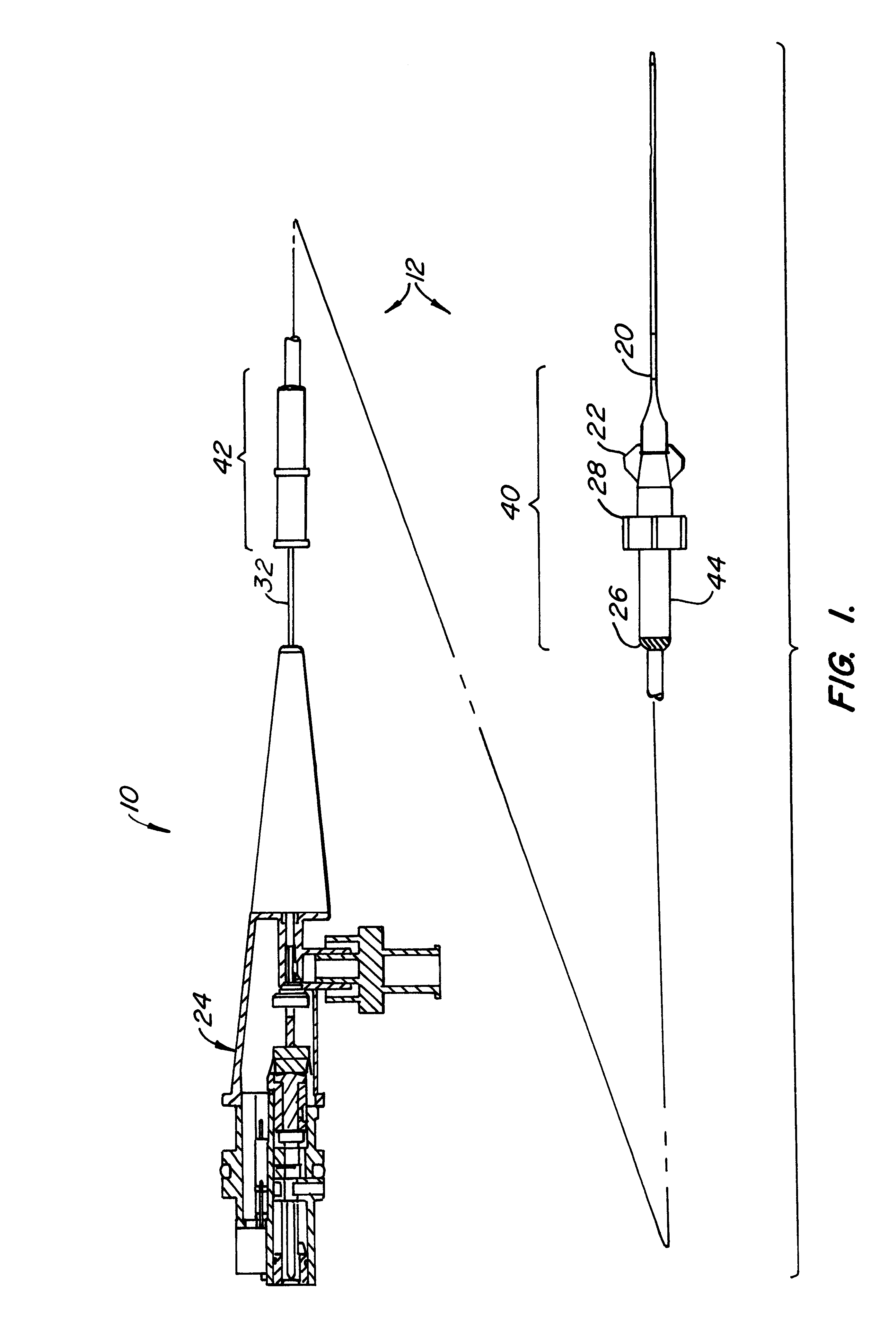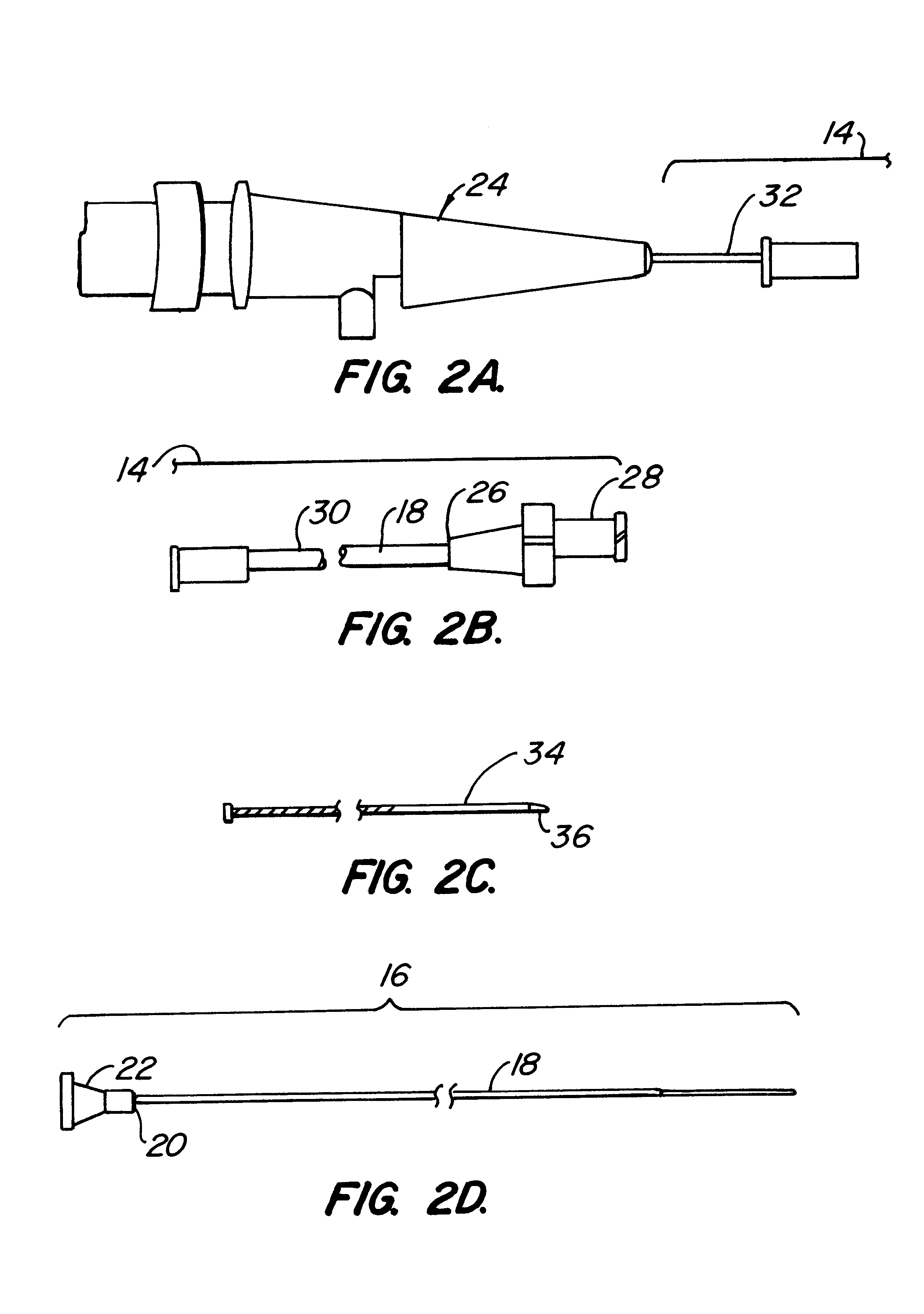System and method for intraluminal imaging
a technology of intraluminal imaging and system, applied in the field of catheter systems, can solve the problems of limited blood flow, serious health risks, power loss and other inefficiencies inherent in catheter transmission,
- Summary
- Abstract
- Description
- Claims
- Application Information
AI Technical Summary
Benefits of technology
Problems solved by technology
Method used
Image
Examples
Embodiment Construction
A vascular catheter system is provided having a catheter body with a proximal portion and a distal portion, both having a proximal end, a distal end and a primary lumen therebetween. This distal portion further includes a guidewire lumen preferably disposed coaxial with, and distal to the primary lumen. A drive cable is disposed within the primary lumen, which is usually axially translatable within the lumen and rotatable about its own longitudinal axis. The drive cable carries a work element at its distal end, typically being an ultrasonic imaging transducer, but optionally being an interventional device. The outer diameter of the drive cable may be varied to accommodate variations in size of the catheter body.
Provided at the proximal end of the drive cable is a tuning hub assembly. The hub assembly, among other things, provides the ability to match the impedance between a transmitter / receiver and the work element. In some cases, the work element may be an ultrasonic transducer, wh...
PUM
 Login to View More
Login to View More Abstract
Description
Claims
Application Information
 Login to View More
Login to View More - R&D
- Intellectual Property
- Life Sciences
- Materials
- Tech Scout
- Unparalleled Data Quality
- Higher Quality Content
- 60% Fewer Hallucinations
Browse by: Latest US Patents, China's latest patents, Technical Efficacy Thesaurus, Application Domain, Technology Topic, Popular Technical Reports.
© 2025 PatSnap. All rights reserved.Legal|Privacy policy|Modern Slavery Act Transparency Statement|Sitemap|About US| Contact US: help@patsnap.com



